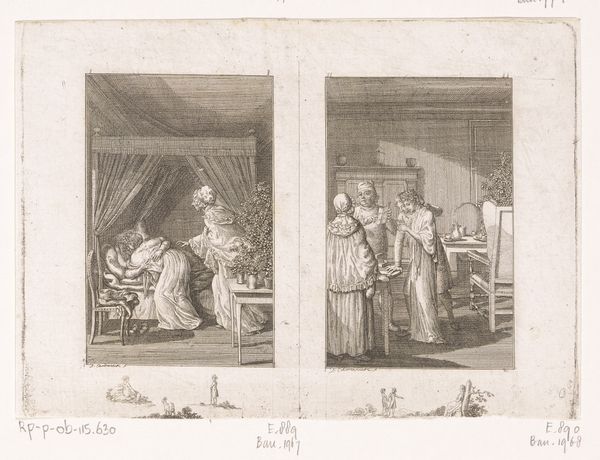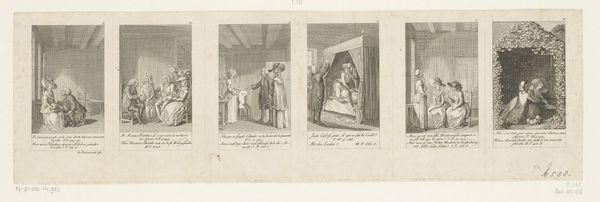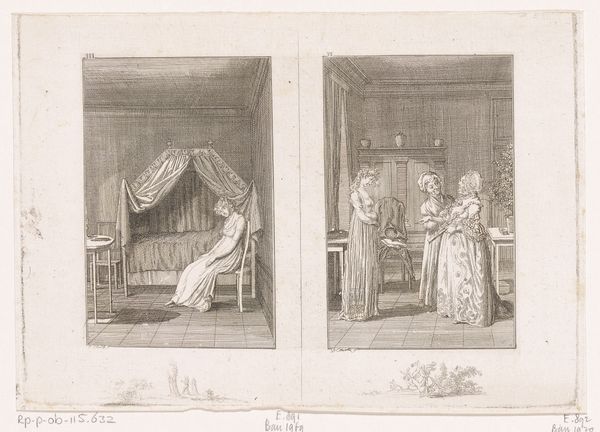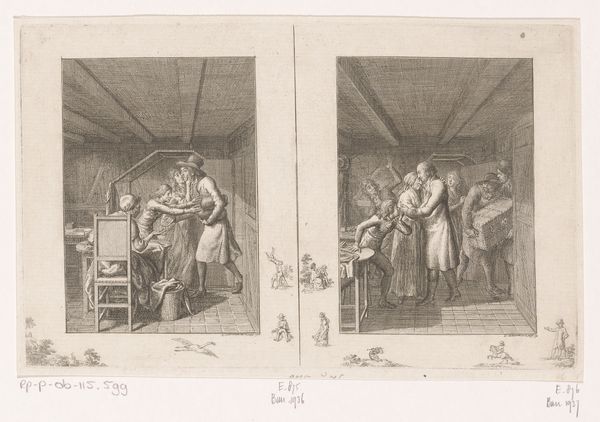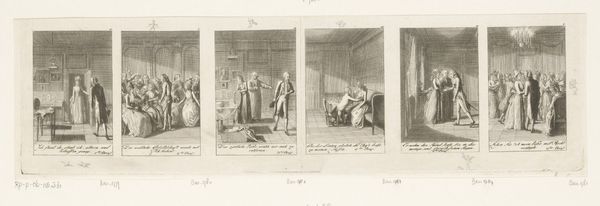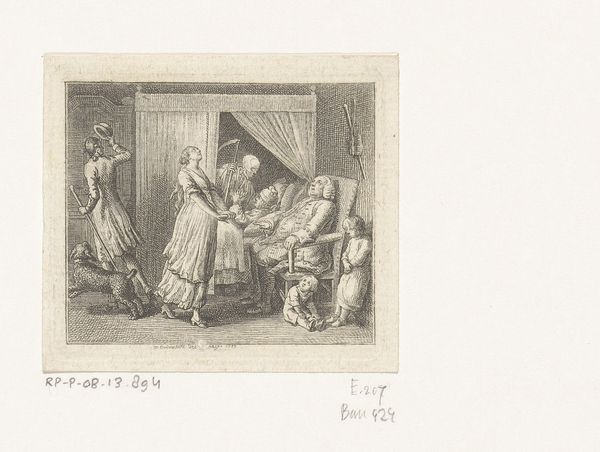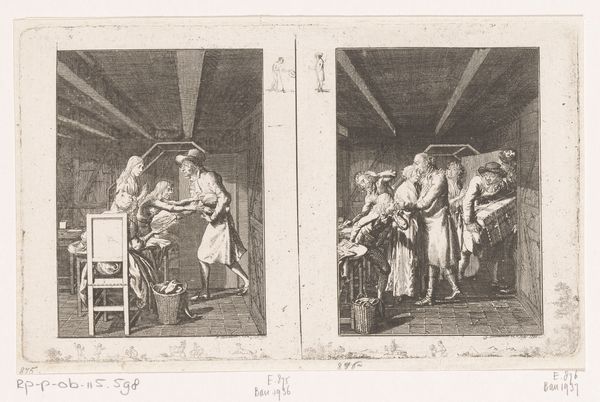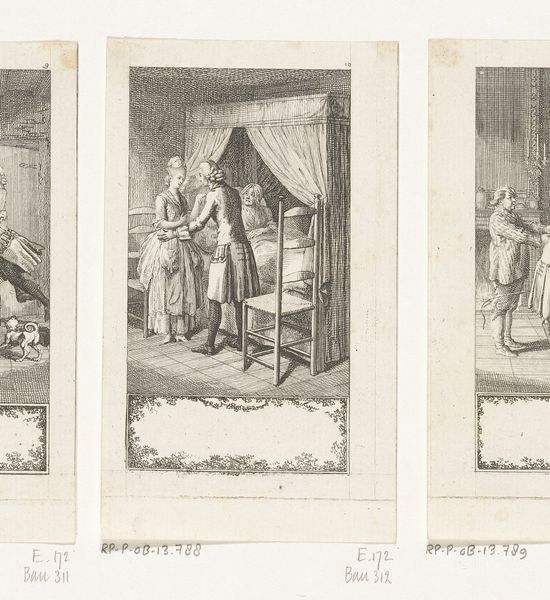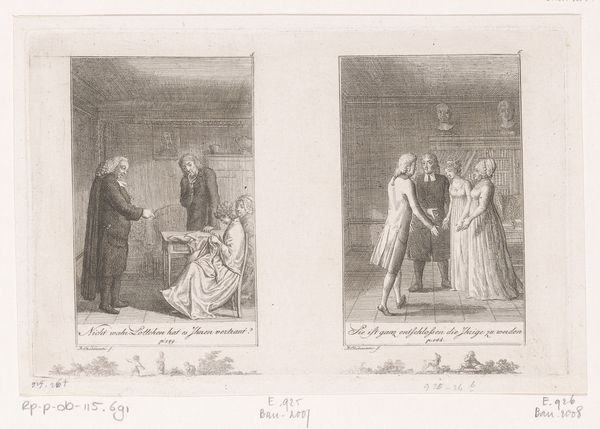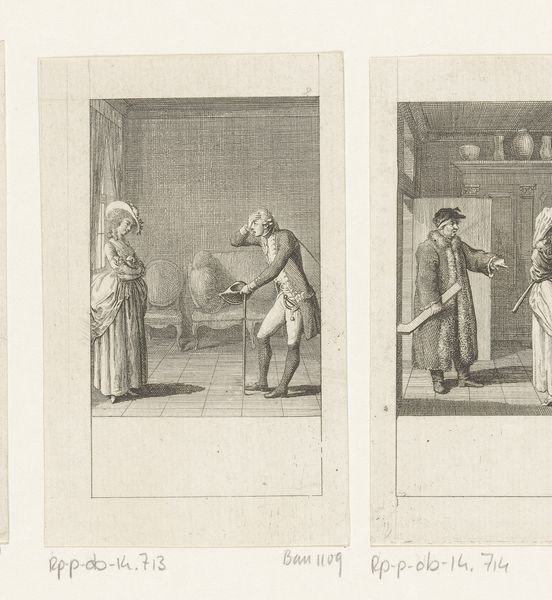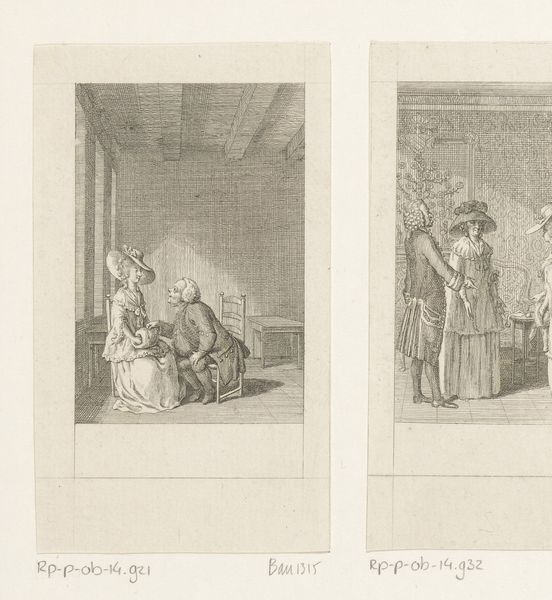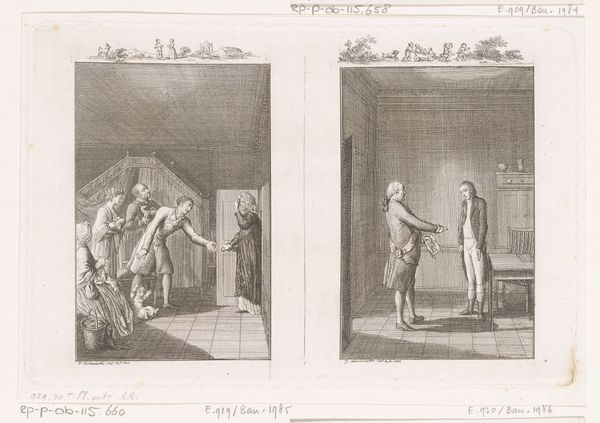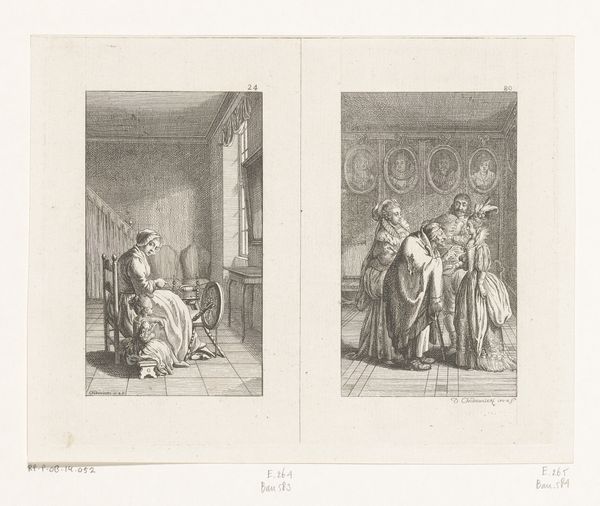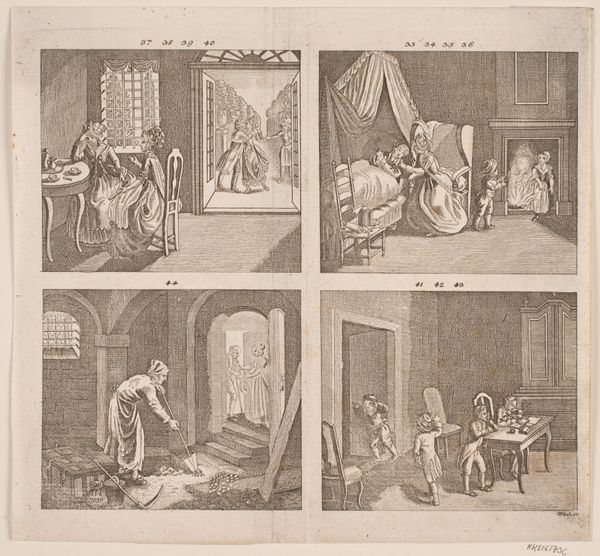
Twee voorstellingen uit Familie Hellmuth van Hiemer 1798
0:00
0:00
danielnikolauschodowiecki
Rijksmuseum
print, etching
# print
#
etching
#
old engraving style
#
historical fashion
#
romanticism
#
genre-painting
#
history-painting
Dimensions: height 117 mm, width 195 mm
Copyright: Rijks Museum: Open Domain
Curator: Here we have "Two Scenes from the Hellmuth von Hiemer Family" by Daniel Nikolaus Chodowiecki, dating from 1798. These are etchings printed on a single sheet, currently held at the Rijksmuseum. Editor: My first impression is of intense, almost theatrical emotion captured in monochrome. The embrace in each scene is so central, drawing all the attention. It feels like a very private moment made public, through the visual language of print. Curator: Absolutely. Chodowiecki was masterful at distilling complex social dynamics into accessible imagery. Look at how he’s arranged these scenes – returns of the prodigal son are classic examples – using poses and details to telegraph specific meanings. Note how the setting influences your feeling; one reunion appears to occur in more humble settings than the other? Editor: The stark contrast is quite clear! One interior is quite plain with visible wooden planks overhead, while the other displays fancier wallpaper and classical busts high on the wall, signifying education and wealth. The clothing seems simpler in the scene on the left. Are these details meant to define character relationships too? Curator: Precisely! We need to remember prints like this were part of a much wider cultural conversation. Through clothing, objects, and body language, viewers would learn proper modes of behaviour and emotional expression for social harmony. Even today, we see the visual contrast influencing perception of wealth. Editor: So this is very clearly instructing the viewer about different socioeconomic lifestyles. Did Chodowiecki handle the printing of these etchings himself? And who might consume something like this in the late 18th century? Was it widely available or reserved for the elite? Curator: Good question! Chodowiecki would likely have relied on skilled artisans for the actual printing process. Etchings like these existed in a kind of artistic in-between; the artist generated the image, while craftspeople brought it into being through careful application of acids, inks, and the printing press. Print culture existed beyond simple “high art.” Editor: Thank you; looking at this double scene, knowing how prints can circulate ideology makes it all more pertinent. Now it's about observing, but also seeing who and how made these stories come to life for those viewers so many years ago.
Comments
No comments
Be the first to comment and join the conversation on the ultimate creative platform.
